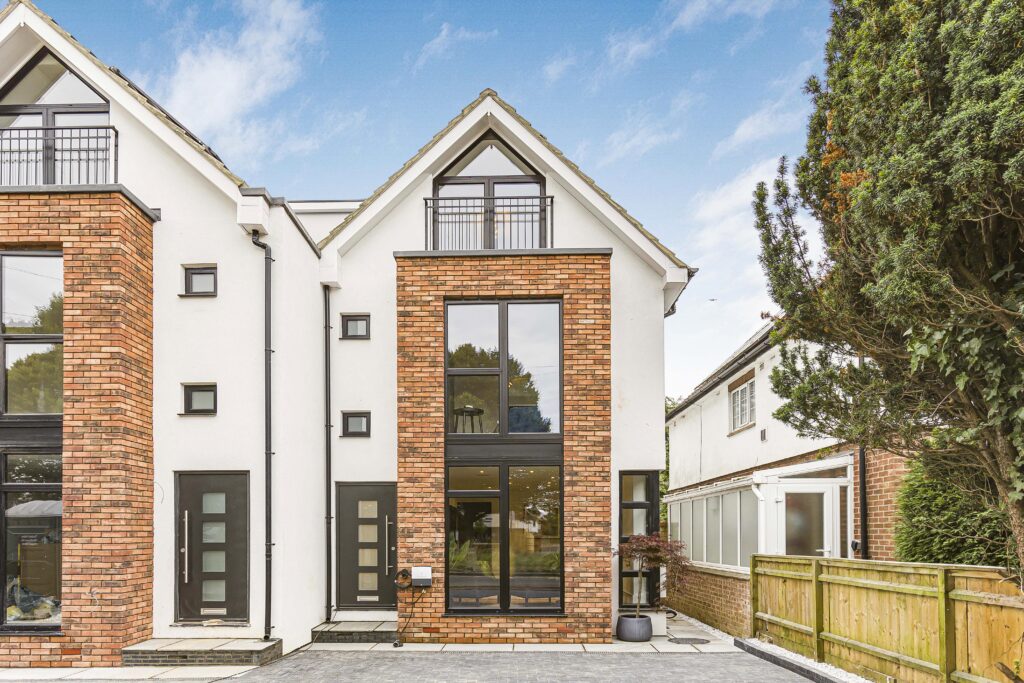People in the business told us building net zero homes was complex. And making a profit is practically impossible. But we were determined, and we set out to prove them wrong. Imagine our surprise then when the results from our first home confirmed that we had built a better than net zero home, profitably!
At Pearcroft, we’re eager to work with likeminded investors, so much so, we’re offering between 8% and 20% returns per year and each investment package provides fixed returns. Actual rates vary depending on the type of investment, but we have four different investment packages to choose from and each opportunity has its own terms and details. The beauty with all our sustainable properties is that they’re luxury homes in desirable areas. We’re not forfeiting comfort for efficiency. We balance life’s little luxuries with sustainability. More eco-chic than eco-warrior. So, they appeal to a wide audience with a respectable price point.
Don’t get us wrong, it’s not easy building net zero homes, but contrary to popular belief, it is possible. And it’s considerably easier than a lot of the industry made out. So, it got us thinking. What’s really stopping every new home being built as net zero today? And how can we encourage more people to choose the more sustainable option?
Lack of Obligation
Following exhaustive lobbying from house builders, the Conservative Government scrapped plans to bring in mandatory low carbon housing standards in 2015. Ed Matthew, the campaigns director at the E3G think-tank said: “Successive Tory governments caved into the powerful housebuilder lobby, who were major donors to the Conservatives.” Despite preparing to meet lower carbon standards, as soon as the news hit, they continued building the way they always had, saving billions of pounds.
Without a legal mandate, changing the traditional mindset of big developers, ruled by robust governance and vocal shareholders, it could be like turning an oil tanker – slow, difficult, and a huge risk of environmental damage. There are some choosing the better way and driving change, however those mindful developers are in the minority so only a small percentage of the government’s 1.5 million new homes target will be low carbon.
Ignoring the Customer
There also seems to be a common myth that home buyers or even investors don’t want lower carbon and sustainable homes. Wrong! While there’s still some ambiguity and lack of awareness, there’s been an incredible shift in demand over the last few years.
Many developers see sustainable features as a luxury rather than essential. Sure, you might save a few quid now, but at what cost to the future? What would have happened if Volvo chose their bottom line over safety and never launched its three-point seatbelt?
So, when there’s a clear cost-benefit to more energy efficient and lower carbon homes, it’s even more baffling that the majority of the industry is ignoring the demand for these homes.
Challenging Workforce Misconceptions
One thing that’s common among the hopeful minority of developers choosing to focus on low carbon properties, is their willingness to learn and listen. We’re not denying that building net zero homes is challenging because unlike traditional construction methods, there is no step-by-step guide to copy or show how to do things, but what we’ve learnt is that a lot of on-site teams already have some of the necessary skills to create and install technologies that assist in making a home Net Zero. And there is an eagerness to learn more! When we recruit, we have an enormous response from highly capable people because they want to work in a more modern and lower carbon way.
And it’s not just younger recruits. We found all trades, backgrounds and ages show a huge willingness to get involved and learn.
Zero Energy Bills for Homeowners
Operational carbon is what most people think of when they hear ‘net zero’. It’s the emissions from the energy and water used in the building. We’ve proven net zero operational carbon is achievable because there are no year-to-year carbon emissions to heat and power Pearcroft homes. That’s why we guarantee homeowners have zero energy bills for five years. Maybe this is how the industry can be enticed to build more sustainably, by seeing a high demand for homes with zero energy bills.

How We Do More
As an industry, we’ve all got to do more. Whether that’s holding ourselves to account, supporting one another to improve or radically changing our thinking. Because Pearcroft Homes believe that building homes for the future means more than just meeting today’s standards, we do things differently. It means pushing boundaries, challenging norms, and proving that luxury living and sustainability can go hand in hand. Net zero homes don’t have to be boring ugly boxes, we make beautifully unique and architecturally sensitive homes. And we’ll continue banging our drum and encouraging everyone to join our mission.
Yes, we’re proud of our net zero achievements, but we want to go further. We want each of our homes to have operational carbon emissions of minus four tonnes. That’s a staggering twelve tonne reduction compared to the average UK home with 8.1 tonnes of carbon emissions each year.
We’re also looking at ways to tackle embodied carbon and improve our whole-life carbon performance and we think every housing developer should (and can) do this too by:
- Sourcing low-carbon and recycled materials.
- Optimising design to reduce material use.
- Considering the longevity and recyclability of materials.
- Choosing best-in-class suppliers actively reducing their carbon footprints.
- Reducing carbon in our day-to-day business operations.
- Researching and investing in innovative low carbon technologies.
So whether you’re a seasoned investor or just starting out, talk to us about this critical mission. Together, we can create homes that set the standard for future generations and deliver strong returns for those who join us.
Explore our website or give us a call to find out how you can be a part of making sustainable history.
